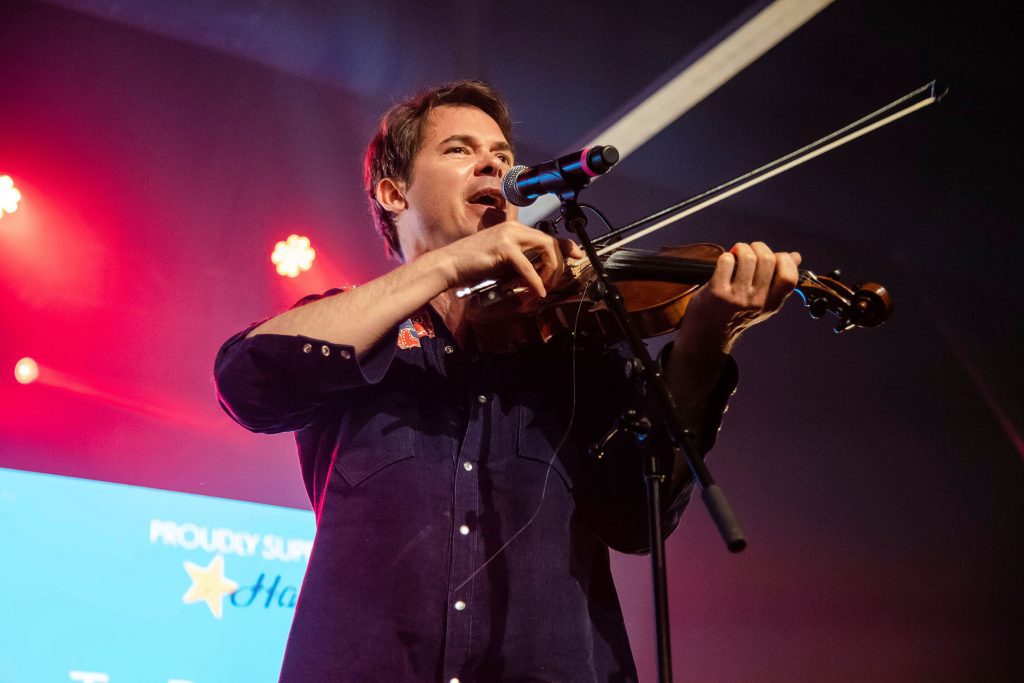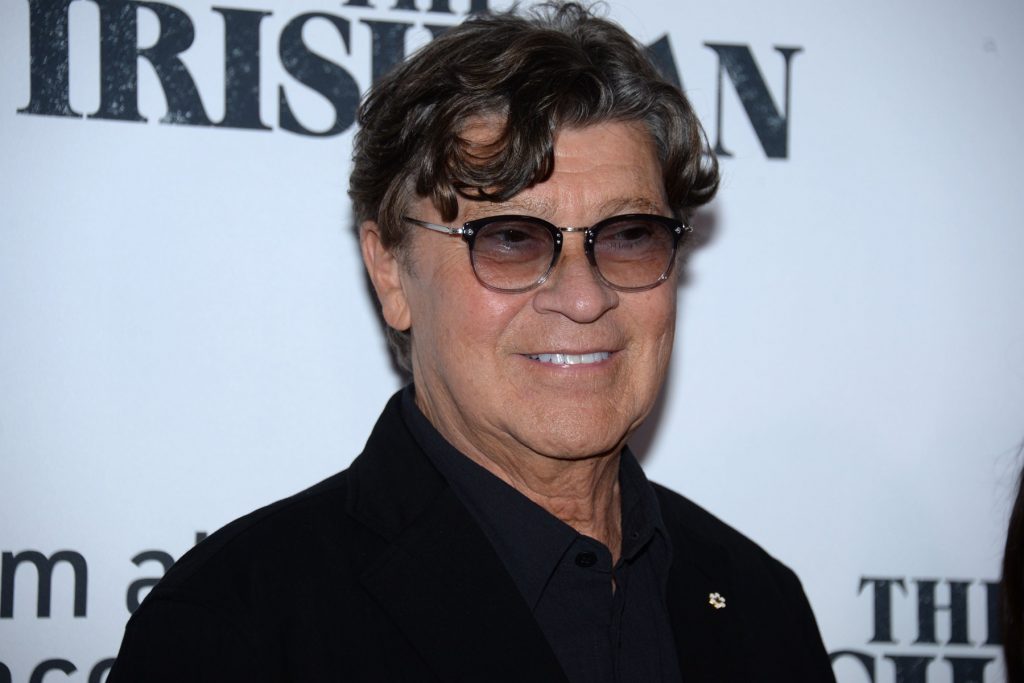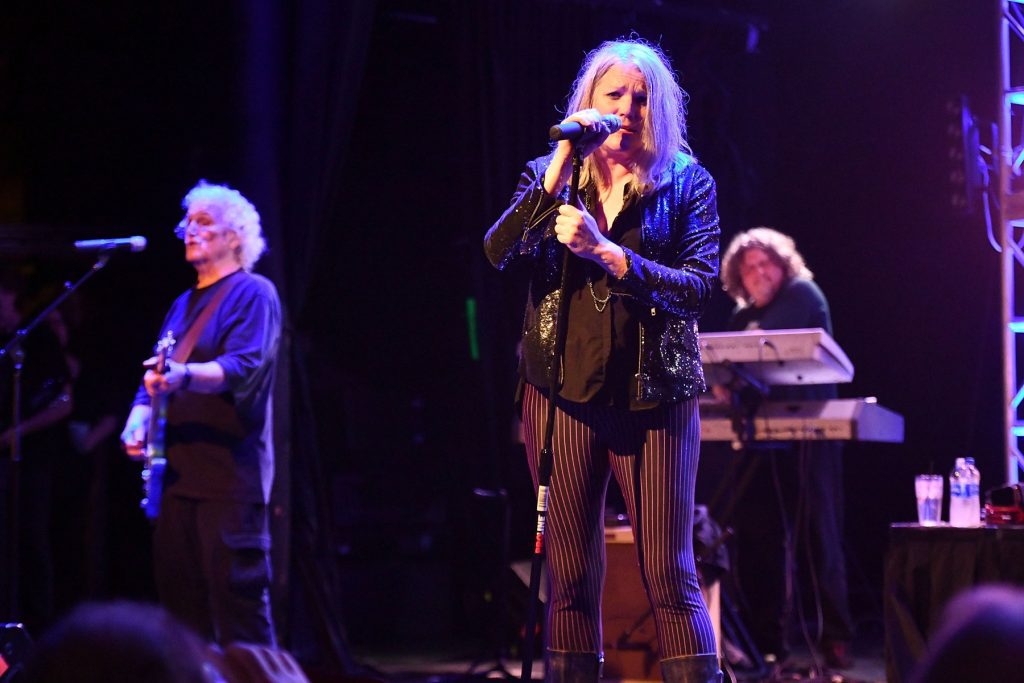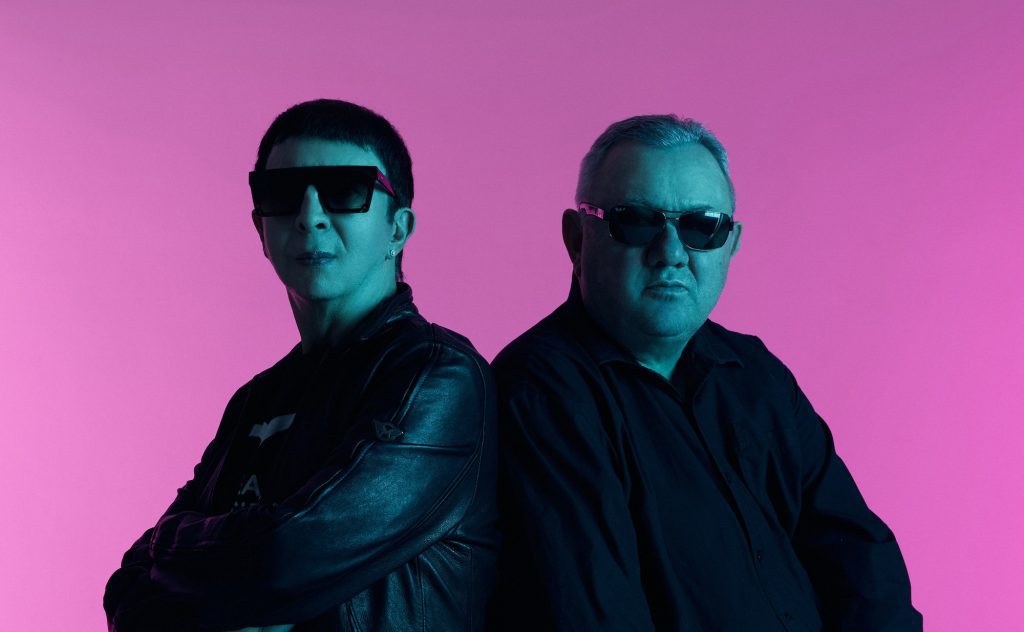
Old Crow’s Ketch Secor Talks Meeting Dylan, Old Time Music on Chris Shiflett Podcast
As the frontman of Old Crow Medicine, Ketch Secor builds a bridge between the traditions of old-time music and the all-encompassing sounds of modern-day Americana. His band has even woven itself into the world of contemporary country, thanks to Darius Rucker’s triple-platinum cover of “Wagon Wheel.” Even so, Secor remains an ardent fan of the old stuff, enthusiastically singing the praises of pre-WWII roots music during this week’s episode of Walking the Floor.
Recorded in April via a socially-distanced Zoom call, the newest installment of Chris Shiflett’s podcast covers everything from quarantine-era livestreams to Depression-era folksingers. Below, we’ve rounded up some highlights from the hour-long conversation.
Although a dedicated road warrior for the past two decades, Secor has been enjoying his time at home during the pandemic, using the opportunity to create videos, livestreamed shows, and one-off singles like “Quarantined!”
“I’m so pleased to work in a place that has all pressure removed,” he tells Shiflett. “No one makes any money in [the live music industry] anymore. There’s no money in art. It’s like Shakespearean times! Now that it’s no longer commodified, we can do whatever we feel in our hearts is right.”
He developed his larger-than-life stage presence from his days as a street busker.
“I came from the street corner,” Secor explains. “The street corner is the development of a psyche of how to figure out what your ‘mask’ is. I don’t know [if] everyone that sings or writes or gets on a stage wears a mask, but I know I do. But my mask feels like me. It doesn’t feel like something separate. It’s something in me that just comes in, and it’s been the same forever.”
Old Crow Medicine Show technically co-wrote “Wagon Wheel” with Bob Dylan, building the song around a chorus Dylan authored in the early Seventies. Despite the song’s massive success, the group’s interactions with Dylan remain scant.
“One time, one our guys from our band was out in L.A. for the Grammy Awards,” Secor remembers. “We had just become really good friends with the Mumford [& Son] boys. Mumford was about to do this big mashup on the Grammys, so my pal from Old Crow was there. Bob was there! They had a funny encounter backstage, and Bob said to my friend, ‘Are you an Old Crow? You guys are killing it.’ That’s good enough for me!”
Long before he met Chris Shiflett, Secor grew up amid a different pack of Shifletts in Western Virginia.
“You’re a different Shiflett than the one I was taught to fear,” he says, remembering a family of right-wing Shifletts whose youngest member, Daryl, haunted the halls of Secor’s middle school. “Daryl had really long, stringy wrestling hair,” he remembers, “and in the 7th grade, Daryl basically beat anybody up. . .and I was one of the kids.”
To musical purists, there’s a stark difference between bluegrass and old-time music. . .and as a teenager, Secor had no problem picking a side.
“Because I played old-time music, I was sort of against bluegrass music,” he admits. “I thought bluegrass music was super square.” When pushed by Shiflett to distinguish between the two genres, he says, “Old-time is everything from the Thirties and back. Bluegrass is everything from the late-Thirties and up.”
Secor’s love for old-time music goes beyond the music itself. The genre, he says, represents something about culture and a time that’s long since past.
“There’s something about the music from before the second World War that defies categorization,” he enthuses. “It has a lot to do with race and it has a lot to do with regionality. These musics are really pure, American sounds that then, through the communication of record-making, get filtered out and strained and segmented and pushed into different places. But when you go to the headwaters — the shit that’s pure — it can be really outrageous. It can be really bizarre. . .Cane flutes, for example. Things that have old-world relations, that reach some cultural zenith in the 1920s, right at the time that fields recordists — and even some commercial recordists — can go capture [those sounds].”




